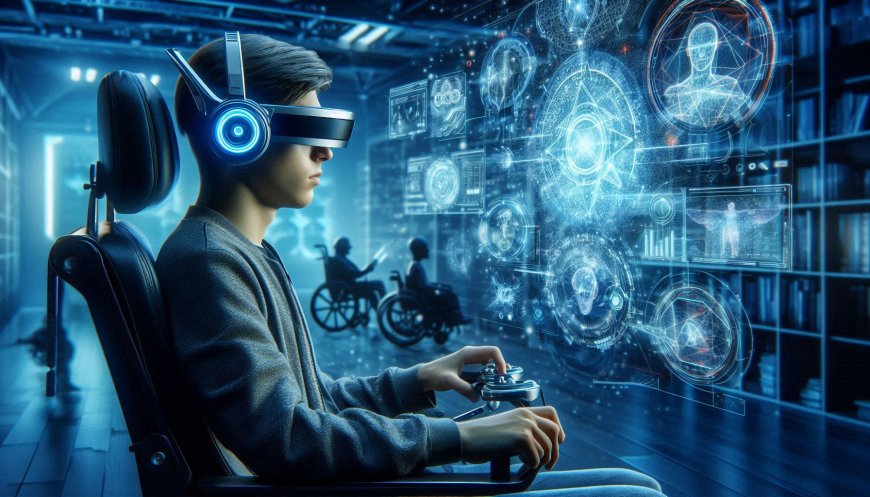Mind Over Matter: The Future of Gaming and Accessibility with Brain-Computer Interfaces
Explore the future of gaming and accessibility with brain-computer interfaces (BCIs), where mind control enhances immersive experiences, making gaming more accessible for everyone, including those with disabilities.

Imagine playing your favorite video game—steering a race car, leaping over obstacles, or exploring a vast digital world—using nothing but your thoughts. Thanks to groundbreaking research from engineers at The University of Texas at Austin, that vision is now a reality. The latest leap in brain-computer interface (BCI) technology has eliminated the need for traditional controls, allowing users to interact with digital environments through sheer mental power.
Breaking Barriers with Brain-Computer Interfaces
What sets this new BCI apart from previous systems is its ease of use. Traditional BCIs often require extensive calibration, where each user’s brainwave patterns are mapped to the system over a long setup process. But the UT Austin team, led by José del R. Millán, has developed a revolutionary interface that uses machine learning to adapt quickly to the user. This dramatically reduces the time it takes to start playing and makes the technology accessible to a broader audience, including those with motor disabilities.
The system works through a cap outfitted with electrodes that detect brain activity. These signals are processed and translated into game commands in real time. Picture yourself in the driver’s seat of a racing game: the car responds to your thoughts, weaving through tracks based on nothing more than the mental command to turn. It’s not just a game-changer for the gaming world but a massive step toward making interactive technology more inclusive.
Enhancing Neuroplasticity Through Gaming
Beyond its novelty, the research focuses on how this interface can enhance brain function by leveraging neuroplasticity—the brain’s ability to rewire and form new neural connections. By engaging the mind in focused tasks, such as steering a car or balancing a digital bar, the interface helps strengthen cognitive function. This is particularly exciting for the potential rehabilitation of patients with neurological impairments.
Millán’s team chose games specifically designed to stimulate different parts of the brain. The complex racing game pushes users to think strategically, mapping turns and maneuvers in their minds. A simpler task—balancing a digital bar—focuses on precision and mental control. Together, these exercises train the brain in distinct ways, with the interface acting as a bridge between thought and action.
The Future of Accessibility and Interaction
While gaming is a fun and engaging application, the implications of this technology go far beyond entertainment. The next phase of the project will test the interface on individuals with motor impairments, with the goal of creating life-changing assistive tools. Imagine navigating a wheelchair, controlling a robotic arm, or interacting with smart devices—all with the power of thought alone.
The team has already demonstrated potential real-world applications, including robots designed for hand and arm therapy. At the recent South by Southwest Conference, these robots showed how BCI technology could aid rehabilitation efforts, providing independence for individuals with physical limitations.
As this innovation progresses, the possibilities are endless. For those with disabilities, it offers a new level of autonomy, enabling them to interact with the world in ways that were previously unimaginable. The UT Austin team’s work represents not only a technological marvel but a significant step toward improving lives through the fusion of mind and machine.
A World of Empowerment Through Thought
The development of this brain-computer interface showcases the future of accessibility, gaming, and rehabilitation technology. By turning thoughts into actions, this innovation holds the potential to revolutionize how individuals with disabilities interact with their environment, paving the way for greater personal freedom and empowerment.
From racing through virtual worlds to regaining mobility in the physical one, this breakthrough in BCI technology is poised to change not just how we play, but how we live.
What's Your Reaction?






































































































